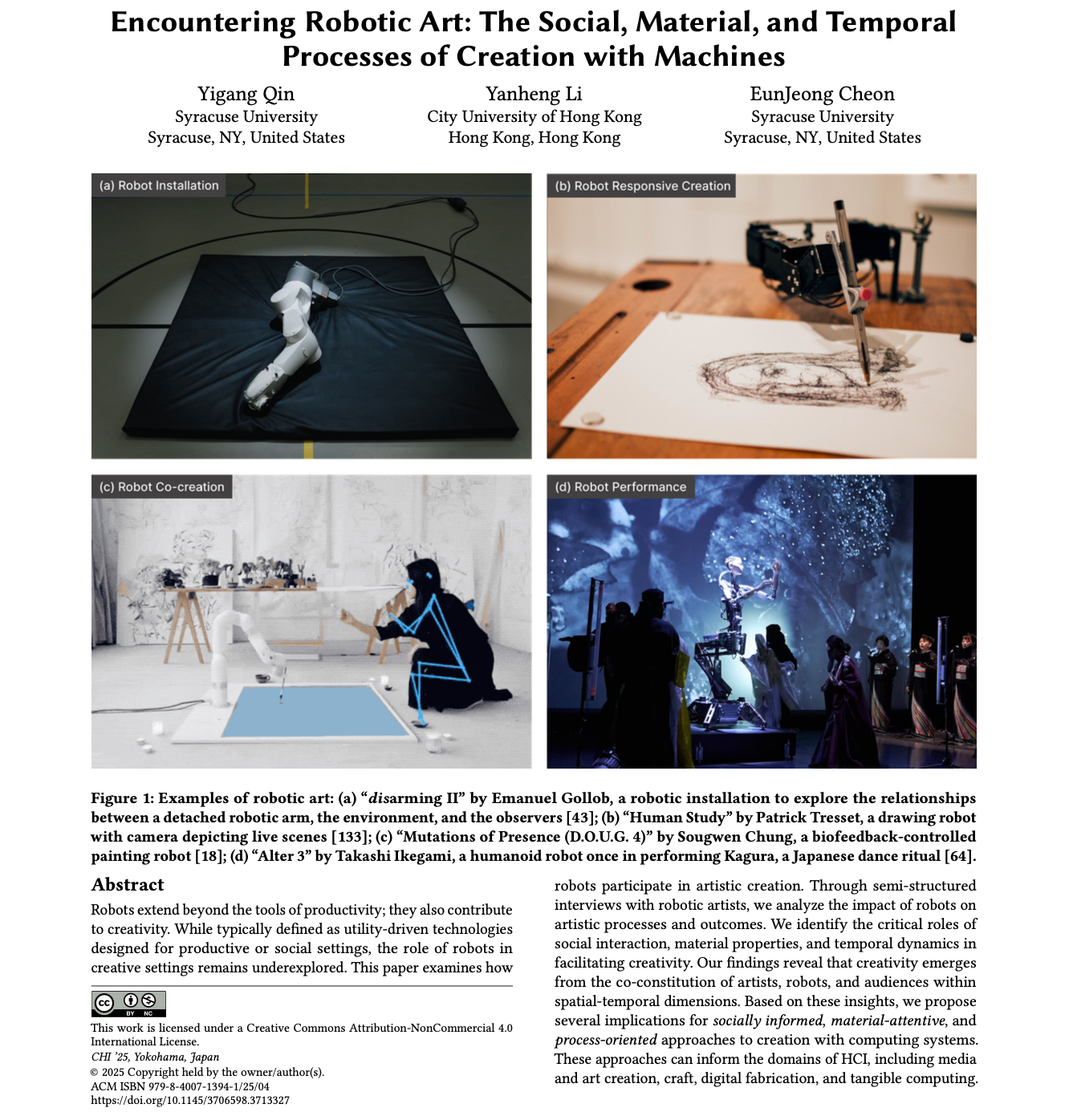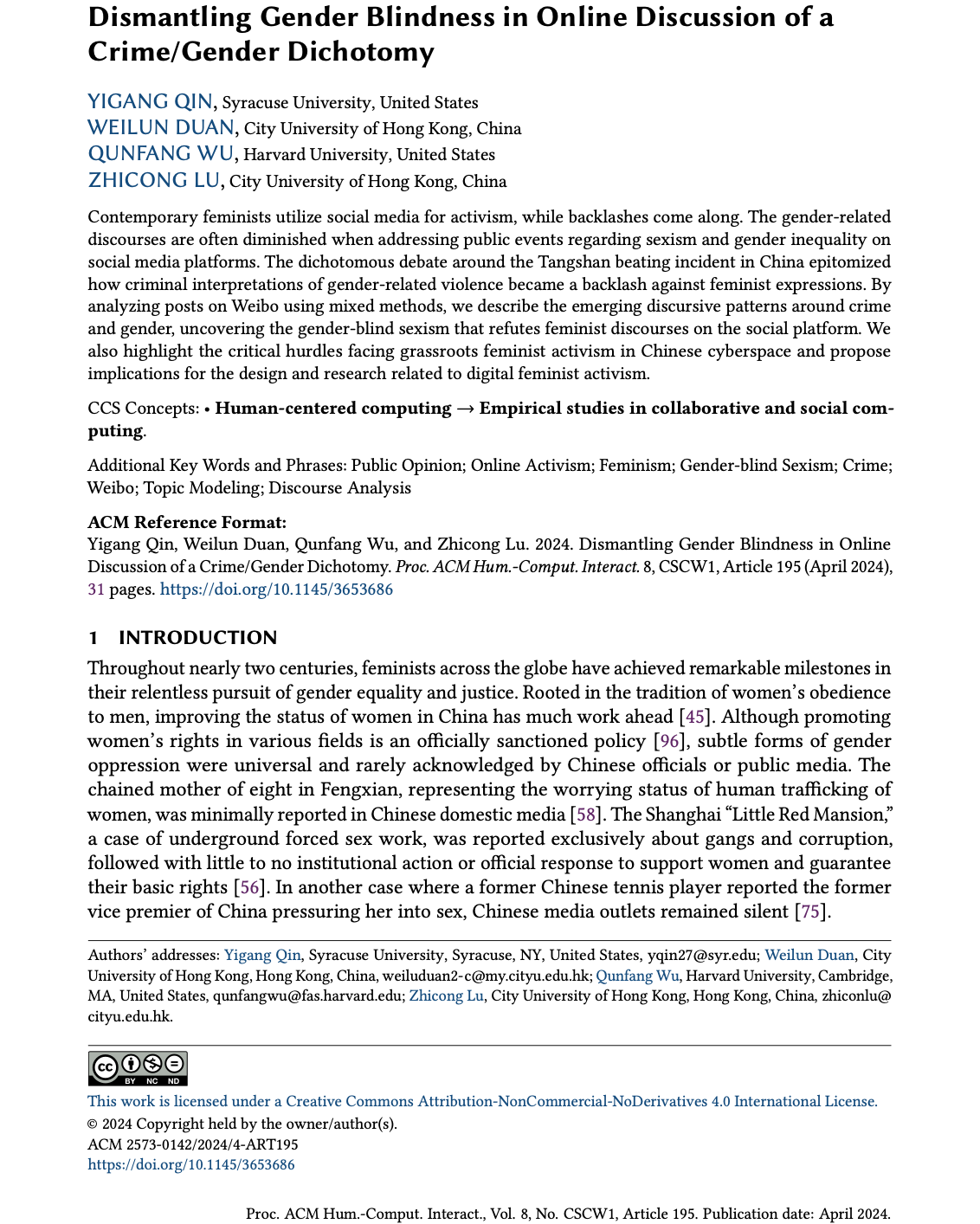Selected Publications

Encountering Robotic Art: The Social, Material, and Temporal Processes of Creation with Machines
Yigang Qin, Yanheng Li, EunJeong Cheon. (2025).
Proceedings of the CHI Conference on Human Factors in Computing Systems (CHI). p 1-18.
Honorable Mention Award
How do contemporary artists creatively play with robots?

Dismantling Gender Blindness in Online Discussion of a Crime/Gender Dichotomy
Yigang Qin, Weilun Duan, Qunfang Wu, Zhicong Lu. (2024).
Proceedings of the ACM on Human-Computer Interaction, 8(CSCW1). p 1-31.
DEI Recognition Award
How do people think about gender in a criminal event?
View Full List of Publications on Google Scholar